Absolutely! I recently painted my cabinets without sanding. I used a high-quality primer and paint designed for cabinets. The key is proper cleaning and prep work. It saved time and the finish looks fantastic!
Discover the transformative secret to updating your cabinets without the hassle of sanding. In this blog post, we delve into the age-old question: Can You Paint Cabinets without Sanding? As a real-life user who faced the same dilemma, I share my experience and guide you through the step-by-step process that saved me time, effort, and the headache of sanding. Say goodbye to tedious prep work and hello to a fresh, vibrant kitchen without sacrificing your weekends to sandpaper!
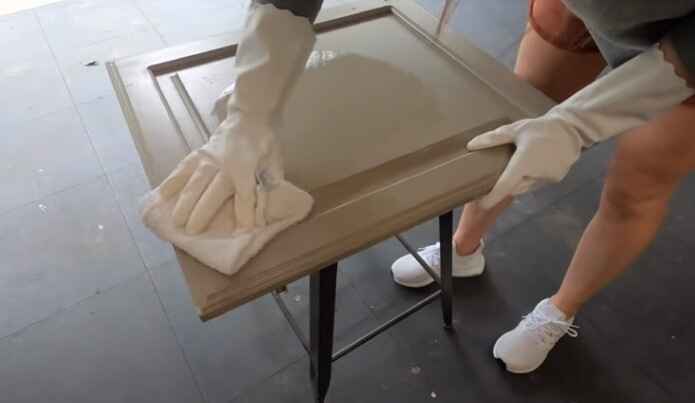
Painting a cabinet without sanding can be a straightforward and less time-consuming task. To start, clear the area around your cabinet, so you have plenty of space to work. Here are the steps you need to take to paint your cabinet without sanding:
1. Prepare the Surface
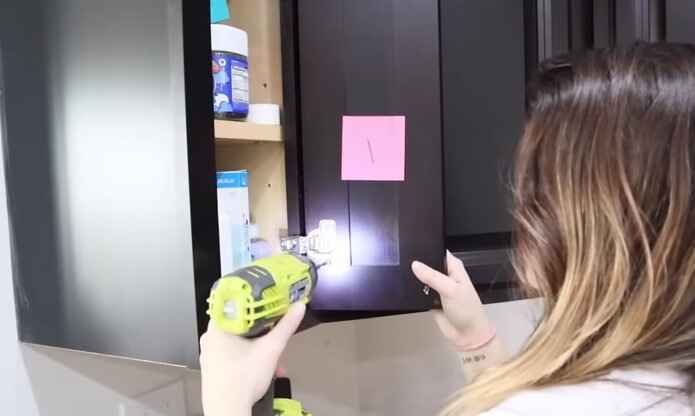
The key to a successful paint job without sanding is proper preparation. Start by removing any hardware from the cabinet and then use a damp cloth to wipe off any accumulated dirt and dust.
2. Use an Oil-Based Primer
Once you have prepped the surface, you will need to apply an oil-based primer. This helps to seal any imperfections in the cabinet, ensuring a smooth finish. Apply the primer with a paintbrush, making sure to cover all areas of your cabinet.
3. Allow Primer to Dry
Allow the oil-based primer to dry for several hours or overnight. This will give the primer time to adhere properly and ensure it is ready for painting.
4. Apply paint
When the primer has dried, you can begin applying your paint color of choice. Use a high-quality brush for an even coat that won't leave behind unsightly brush strokes. Apply the paint in thin layers, allowing each layer to dry before adding a new one.
5. Finish with Polyurethane
Once you have finished painting your cabinet, applying a polyurethane coat is essential for added protection and shine. This will help protect your cabinets from wear and tear and make them look great for years to come. Apply two coats of polyurethane and allow each coat to dry thoroughly before applying another one.
By following these steps, you can easily paint a cabinet without sanding. With proper preparation and quality materials, you can achieve a beautiful finish that will last for years!
Painting Cabinets without Sanding: Advantages and Disadvantages
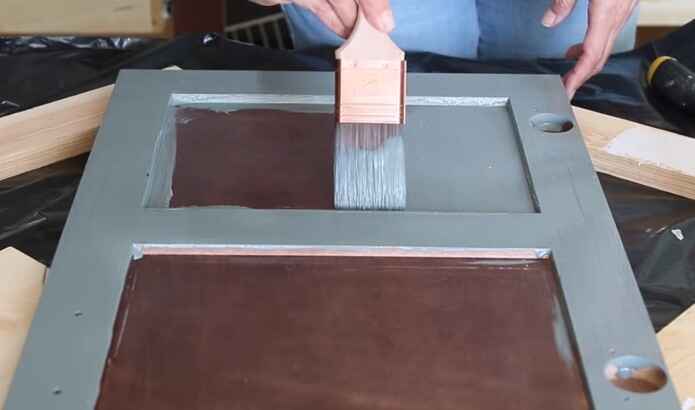
Updating your kitchen cabinets with a fresh coat of paint is one of the most cost-effective ways to update your kitchen. But sanding and priming each cabinet before painting can be time consuming, and it does add to the cost of your project. So, one question that often arises is: can you paint cabinets without sanding?
The answer is yes. You can paint cabinets without sanding, but this approach has both advantages and disadvantages. Here is a look at the pros and cons of painting cabinets without sanding:
Advantages
1. Cost Savings:
Sanding and priming your cabinets before painting adds to the project's cost, so skipping the sanding step could save you money.
2. Time Savings:
Besides saving money, skipping sanding also saves time. You can get your kitchen update done in significantly less time without going through the laborious process of sanding each cabinet door.
3. Less Mess:
With no sandpaper or primer involved, painting cabinets without sanding cuts down on mess and clean-up time.
4. Easy to Touch Up:
If you need to do any touch-ups on your cabinets, it's much easier to apply a new coat of paint rather than sand and prime the cabinets again.
5. Better Results:
By using high-quality, oil-based paint formulated explicitly for cabinets, you can achieve great results with painting cabinets without sanding.
Disadvantages
1. Not Recommended for Certain Woods:
Painting without sanding works best on surfaces like laminate and metal, but it's not recommended for woods because the finish may not adhere properly. So if your cabinets are made from wood, you'll likely need to sand them before painting.
2. Poor Surface Adhesion:
Without sanding the surface first, getting a smooth layer of paint can be challenging over any irregularities on the cabinet surface.
3. Limited Paint Choice:
Certain types of paint, such as latex, will not adhere properly to a non-sanded surface. When painting without sanding, you should use an oil-based cabinet paint formulated explicitly for cabinets.
4. Increased Risk of Peeling:
If there is any grease or dirt left on the cabinets when you start painting, there is a risk that it could cause the paint to peel off after drying. To reduce this risk, thoroughly clean your cabinets before painting them.
Taking the time to consider both advantages and disadvantages can help you decide if painting cabinets without sanding is right for your project. Be sure to consider all the factors above before making your decision. With the proper preparation and paint, you can achieve beautiful results without having to sand your cabinets first.
What type of paint should I use for painting cabinets without sanding?
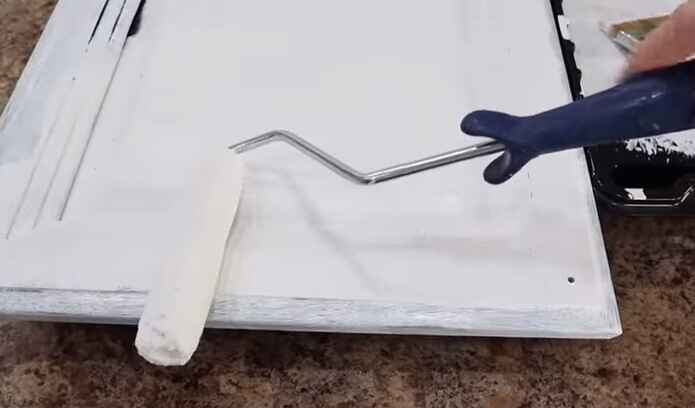
Painting cabinets without sanding is a great way to quickly and affordably give your kitchen a facelift. When selecting paint for this project, there are three good options to consider: oil-based paint, chalk paint, and latex paint.
Oil-based paint is the most common type used for painting cabinets without sanding. It is durable, long-lasting, and easy to apply with a brush or roller. However, it is also more expensive than other types of paint and may require a primer.
Chalk paint is an ideal choice for painting cabinets without sanding. It produces a beautiful, smooth finish and requires no primer or sealer. It is also easy to apply and very affordable.
Latex paint is another great option for painting cabinets without sanding. It is a water-based paint that offers a clean, bright finish and provides excellent durability. Additionally, it can be easily cleaned with soap and water and dries quickly.
With all three good options for painting cabinets without sanding, you can choose the one that best fits your budget and project needs.
Can you paint over a glossy finish on cabinets without sanding first?
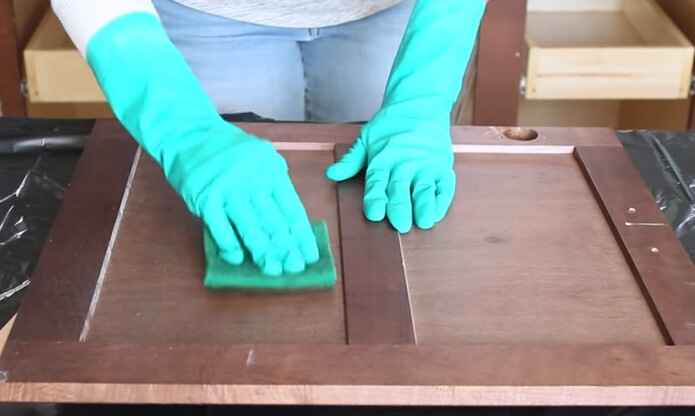
Yes, you can paint over a glossy finish on cabinets without sanding first. However, if you want the best results possible and for your paint job to last, it is recommended that you prepare the surface by lightly sanding it with fine-grit sandpaper before painting.
Additionally, cleaning the cabinets thoroughly with a degreaser before sanding and painting is essential to remove any dust or dirt that may have accumulated on their surfaces. Once you've prepped the cabinets properly, use a high-quality primer explicitly designed for glossy surfaces before applying any paint. This will help ensure that your finished product looks smooth and professional.
Can I use a deglosser instead of sanding my cabinets before painting?
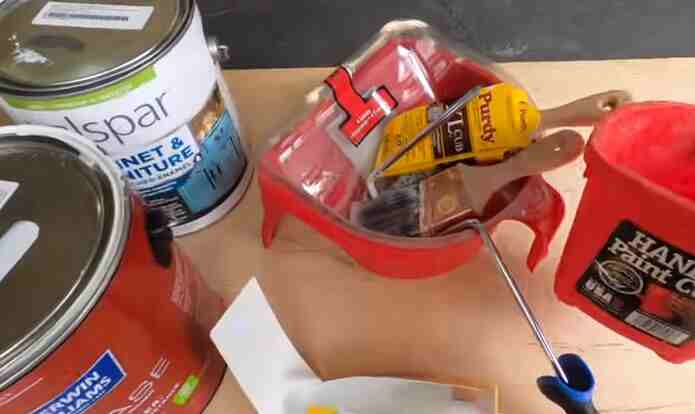
Yes, you can use a deglosser instead of sanding your cabinets before painting. Deglossers are specially formulated to remove the glossy finish from surfaces that can't be easily roughed up with sandpaper or other abrasives.
The advantage of using a deglosser is that it doesn't require any physical abrasion, which means less mess and fewer dust particles in the air.
However, it does take longer for the chemical reaction to occur and will require multiple applications for the best results.
In addition, some types of cabinets may still require light sanding even after applying deglosser. It's essential to follow label directions when using a deglosser and always do a test section before applying it over larger areas.
How long does it take to paint cabinets without sanding?
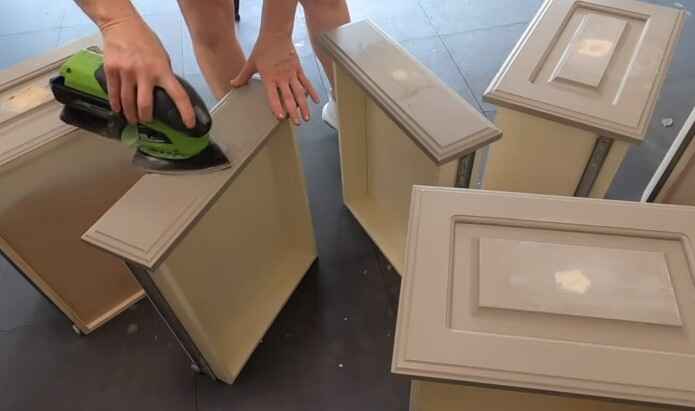
It typically takes between 4-5 hours to paint cabinets without sanding. The exact amount of time it takes will depend on how many layers of primer and paint you are applying, as well as the size and complexity of the cabinet doors. If you are using a sprayer, this can cut down on time significantly.
Additionally, suppose your cabinets have been previously painted. In that case, you may skip priming or use a 'bonding' primer that works well for most surfaces without requiring extensive sanding or preparation.
Ultimately, the best way to determine the timeline for painting your cabinets is to consult an experienced painter who can assess your specific project needs. With their help, you can ensure the job is done quickly and correctly.
Will the finish be smooth if I paint cabinets without sanding?
It depends on the type of paint you use. If you're using glossy paint, you won't need to sand because the finish will be smooth.
However, if you're using matte or eggshell paint, you'll need to sand before painting because those finishes are not as smooth as glosses.
Final Words
To conclude, cabinet painting is a great way to refresh the look of your kitchen or bathroom without spending a fortune. With the right preparation and quality paint like latex or enamel, you can successfully paint your cabinets with minimal sanding involved.
If you are feeling adventurous and want to try it, clear off your workspace, use proper cleaning and degreasing solutions, and apply enough coats of paint for optimal results.
Whatever route you choose – either replacing or painting – make sure you consider all your options and all the pros and cons before taking on this project. Good luck!